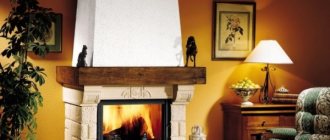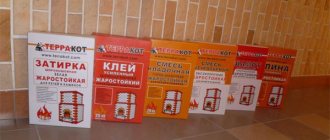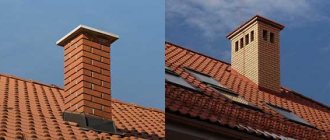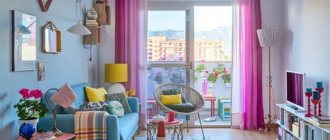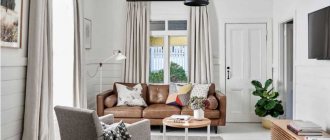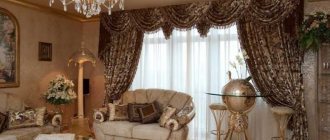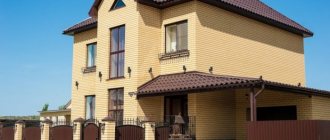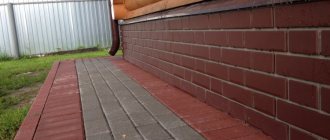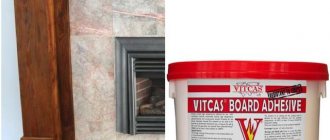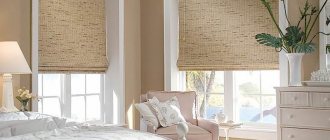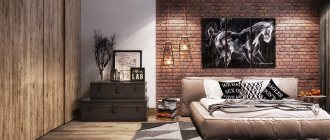Katrin
5811 0 0
Katrin March 7, 2018
The Bavarian type of masonry gives the building an aesthetic appearance
Bavarian masonry is a special type of masonry that includes a combination of bricks of various types and shades. However, red and brown colors of bricks are most typical for Bavarian masonry. There are some nuances in creating Bavarian masonry, let's take a closer look at what it is.
How to choose material?
If you are planning to clad the facade of your house with Bavarian brickwork, then you should know that purchasing a batch of bricks from the nearest factory most likely will not help you.
For such finishing, multi-colored blocks are made. Color schemes may vary among different manufacturers. When selecting building materials for such foundations, you should look not only at their color, but also at other important criteria. Brick quality. Under no circumstances should the blocks have chips, deep scratches or other similar defects.
Damaged materials won't last long, so it's important to look for high-quality, damage-free products.
Uniformity of color. It doesn't matter whether you buy a light or dark brick
Both materials should have a uniform color, without pale or dark prominent spots.
Manufacturer. Buy only good bricks from reputable manufacturers. The most popular today are the plant in Stary Oskol, the LSR plants and the Golitsyn ceramics plant.
If we consider the specific parameters that a brick (for example, reduced) in Bavarian masonry should have, they are as follows:
- strength grade – not lower than M150;
- frost resistance level – not lower than F50;
- moisture absorption – from 8 to 10%.
Architectural features
The main highlight by which the German style of a house is determined at first glance in any photo is the visible “outer” frame, as if encircling the structure. It is also load-bearing in the original method of construction.
Currently, its imitation is popular for decorative purposes. This is especially true for regions with harsh climates, where the thickness and thermal insulation properties of walls are important.
Conventional frames are not suitable for such places, but it is quite possible to give the exterior a noble look with the help of finishing.
The porch is made compact and low, symbolically designated, which differs significantly from the Russian style with massive high extensions, more reminiscent of a terrace.
A gable roof of strict shapes without design complications is covered with natural ceramic tiles, but to save money, soft bitumen analogues are also suitable. The appearance will not be greatly affected.
How and from what is Bavarian brick made?
Bavarian type masonry bricks are produced using flash firing technology. It has existed for a very long time, it was used by our distant ancestors, who preferred to “blacken” the traditional building material made of red clay.
The designated technology consists of performing the following actions:
- At the moment when the formed block is placed in the furnace for further firing, materials with a high level of flammability, which contain a large number of organic components, enter through special hatches.
- Firing is carried out at a temperature of 1000 C. Reaching this limit, organic additives instantly burn out, forming soot, which colors the brick in the required color.
- The dyeing process occurs by redirecting carbons to the finished product. The procedure is carried out using gas flows, which set a strict direction for the organic soot.
Modern firing equipment is protected from excessive ingress of oxygen masses. In such an atmosphere, combustion promotes the formation of more organic elements.
The specific tones and shades of the brick will directly depend on the amount of carbon. The more there are, the more saturated and intense the color of the building block will be. If fewer organic elements are used, the brick has a light shade.
It is worth noting that flash firing technology does not involve the use of pigment dyes. This is because the dye is an inert compound that is not capable of reacting. That is why it is impossible to achieve the shade inherent in natural material.
Bavarian-type facing bricks are no different from standard facing blocks and comply with GOST requirements. The basis of the material is clay, to which various additives are added:
- leaning - inorganic components designed to facilitate the process of mass formation and reduce shrinkage (slag, sand, ash);
- burnable - organic elements responsible for reducing the density of the brick and increasing the porosity of the structure (sawdust, coal, peat);
- special – control the firing temperature;
- mineral - help to increase the density of the block structure, increase reliability and strength.
Strengthening masonry
Before you think about strengthening the wall, you need to put the foundation in order. So, if the base has cracks or breaks, then vertical cracks will pass through the brickwork over time. It is necessary to repair the foundation, and then strengthen the wall. If the foundation is in order, then you can strengthen the wall. For this purpose, wire reinforcement and plaster are used. Thanks to these measures, you can be confident in the strength of your wall.
Necessary materials and tools for strengthening brickwork:
- Rabitz;
- plastering solution (dry mixture or components for the selected composition);
- trowels;
- nails or dowels;
- wire.
Wall strengthening technology
First of all, it is necessary to clean the wall being reinforced from dust, dirt and smudges. At the next stage, you need to clean the seams to a depth of about 10 mm. Next, nails or dowels are driven into them so that their heads protrude 20 mm above the wall surface. The distance between nails should be about 80-100 mm.
The selected mesh netting should have a mesh size of 70-80 mm. Place the mesh on the wall and tie it well to the nail heads with wire. This must be done very carefully, firmly tying the mesh to each nail, the strength of subsequent plastering will depend on this.
When strengthening a wall, you can do without a chain-link mesh using wire with a cross-section of 2 mm. Such wire is wound between nails, thus forming cells. Strengthening the corners should be given special attention.
After the reinforcement is completed, plaster can be applied. The mixture for it is prepared from cement and sand, in a ratio of 1:3 or 1:4, and diluted with water to the required consistency. Sand acts as a filler, and cement acts as a binder. The filler is necessary to give the solution strength and protect it from cracking. Before preparation, it is advisable to sift the components of the mixture through a construction sieve, in order to avoid the appearance of lumps, which are inconvenient to select from the finished mixture. The composition can be used within an hour, so do not knead too much. The plaster must be laid in such a layer that it hides all the nails and mesh.
Brick laying scheme
During laying, you need to place materials of different shades nearby.
The Bavarian layout is based on the required positions:
- The bricks must be the same size.
- Do not place bricks of the same shade next to each other. It's better to take several options and create chaos.
The herringbone or pyramid pattern are more complex options, since you need to monitor from afar which bricks to lay and how to combine them. This type of block masonry is used to construct a fence. You can also decorate it with a fence. Brick fences can have a different surface; it can be smooth or corrugated. You can “play” with different colors and shades or make a fence to match the design of the facade.
Projects using Bavarian masonry are very popular, as such structures do not look boring. If you choose the right solution, you may not notice that the house is brick, because different shades and colors create the effect of a pattern on the walls. White Bavarian masonry, brown, red or any other color is most often used. Typically, the masonry pattern is laid on the first row, and then repeated through the row.
Getting a drawing
Bavarian brick can be embossed or smooth. Within the same object, two types of material can be used at once, but they cannot be mixed. Usually, with the help of smooth brick, individual elements of the object are highlighted, but the main cladding is done using relief masonry, or everything happens the other way around.
To create certain designs using Bavarian masonry, follow these rules:
- the first row should contain bricks of each color;
- their number of different colors should be approximately the same;
- distribute dark and light bricks evenly so as not to create a spotty effect;
- think about the design option in advance;
- choose colors carefully; if you combine contrasting shades, the effect can be unpredictable;
- drawings should not be symmetrical.
Bavarian masonry methods
Before you start laying bricks in the Bavarian style, you need to make a sketch. On paper you need to highlight individual fragments that will be done in a darker tone. It is also worth clearly drawing where which colors will be placed. Real professionals create several such sketches, and the customer determines which option suits him best.
Art Nouveau house with Bavarian masonry on the facade
Sketches of the “drawing” of Bavarian masonry
Even in ancient times, this technique was used for cladding buildings. Today, the availability of different shades of building materials allows us to significantly expand the possibilities. The main requirement, which has not changed for decades, is the creation of a harmonious pattern.
In the Bavarian style, corners, cornices and platbands can be done in one tone, and the walls in another. This approach gives the building a special touch.
Finishing the main walls with brickwork in a panoramic two-level house
An excellent option is two-color masonry. With this type of work, a specific mosaic is created, which only at first glance seems simple. In fact, the finished work looks amazing.
Light Bavarian masonry, the photo of which gives a real idea of the future look, allows you to emphasize the sophistication of taste. It looks more noble and elegant.
A bright house of classical construction with Bavarian decoration of external walls
Multicolor Bavarian masonry involves the use of five to eight different shades. With this technique, you can use both bricks of the same shade and contrasting products. Experts recommend first depicting this look on paper so that the final effect is as planned.
Brayer brick, the use of which makes Bavarian masonry look “aged”, creates harmony in the entire courtyard of a private house. In the hands of a master, this material takes on a completely different meaning. It is like the brush and paints that a successful artist uses to create his masterpiece.
Bright multicolor Bavarian masonry for a country house
Brick wall in the interior: from eclecticism to loft
A brick wall in an apartment is not only a historical heritage. It can be a bold decoration and a bright accent. Everyone’s tastes are different, but one thing is for sure - brickwork attracts the eye, you can’t calmly pass by it, you’ll definitely want to stop and take a closer look at it. If you are the happy owner of such a wall in your apartment, do not hesitate to use design techniques to create a unique interior.
Improvisation, or what materials are suitable for simulating brickwork
When it comes to a brick wall, you need to understand that these are not always rough elements protruding from the supporting structure. In order to achieve the desired effect, various techniques and finishing materials are used.
Firstly, the brick wall in the interior can be real. This option is suitable for owners of private houses and new buildings with rough finishing. If a decision has been made to create an apartment design with a brick wall, then it is quite reasonable to leave the necessary fragment in its original form. Naturally, basic finishing will be required, but it will not take much effort and time.
Brick wall in the interior of an apartment
Secondly, the surface can be decorated using plaster, which imitates brickwork. Thanks to a thin layer of coating, the wall will not seem heavy and will not take up extra centimeters of usable space. Imitating brickwork using plaster allows you to create an elegant and impressive interior. This is especially true for the Mediterranean style or Provence style. It is important to use tints to color the mixture into the required color. Using plaster it is very convenient to highlight niches and small fragments of walls.
White brick wall in the bedroom
Thirdly, facing bricks are used to create non-standard interiors. This is a real find for those who like to give free rein to their imagination. There are many options available: matte, textured, artificially aged, glazed. Thanks to this, you can create the desired visual effect. Facing brick is thinner and lighter than regular brick. It is wear-resistant and has a long service life.
Black brick wall in the living room interior
Fourthly, if none of the previous options are to your liking, use tiles. This is the easiest way to create an imitation of a brick wall in an apartment. Originality can be achieved by playing with tile joints and laying options. Consider the fact that tiles require continuous cladding of the wall surface. Chaotic accumulations of elements look sloppy.
Dark brick wall in the living room interior
Limitless possibilities of a brick wall
Unlike a plastered wall, brickwork stands out sharply with its texture and spirit of rebellion. This is a rather bold decorative element, however, it goes well with many styles. You should not make a clear decision to abandon the idea of using such a wall. Try to get to know brickwork better first, and you will be able to not only fit it harmoniously into your interior, but also fall in love with it.
Gray brick wall in the living room interior
Incredible but true, saving on finishing suddenly became a sign of original and exclusive design. Brick walls in the interior do not have clearly defined boundaries of use. Their use is possible in any room - from the hallway to the bedroom. This is a great way to create a personal and practically tangible style atmosphere. A brick wall in its natural form does not require special finishing. In order to leave its natural texture and color, it is enough to lightly clean the surface, prime and renew the seams. Such an authentic wall will be an ideal addition to an industrial style interior.
Brick wall in the interior of the office
There is an opinion that brickwork in its original color creates a rough and even brutal atmosphere. With its help it is easy to achieve an interior in a Gothic style. Of course, it’s not for everyone, but it’s quite suitable for decorating a cottage. You can use the technique of chaotic masonry or combine several methods to enhance the effect of a century-old wall. The gloominess of Gothic castles is effortlessly transformed into a romantic interior. To do this, you just need to add the right lighting, decor, and choose the right shades of furniture and textiles.
Bright and bold personalities will be delighted with a brick wall in a pop art or steampunk style interior. This is a suitable option for those who are not afraid to experiment with colors and textures. The whole palette of rich shades looks great against the background of a brick wall. The rough texture of the masonry not only does not spoil, but even complements furniture in the Art Nouveau and Art Deco styles.
Gray brick wall in the interior of an apartment
An excellent ethnic and African interior can be created thanks to the natural reddish tint of the brick. It goes perfectly with traditional colors of Latin American countries or Moroccan patterns. A brick wall in a natural shade emphasizes the beauty of pottery and souvenirs brought from distant countries.
Brick wall in an ethno-style interior
Brick wall in a natural shade in the kitchen interior
If the spirit of antiquity is not very attractive, then it is enough to open the wall with matte paint, and the bricks will take on the appearance of a smooth, neat surface. This modern interpretation looks organically in a variety of interiors - from country to loft.
White brick wall in the living room interior
Scandinavian design greatly favors the use of brick walls. This is one of the most popular decor options. A brick wall painted in light colors very organically and unobtrusively complements the interior with a Nordic character.
Brick wall in the interior of a children's room in Scandinavian style
Light brick wall in the living room interior
Brick wall in a Scandinavian style bedroom interior
How to organically fit a brick wall into the interior of different rooms
The standard room for using a brick wall is the living room. This is often the largest room in the apartment, so this is where you can show off all your design talents. Dark brickwork is an excellent background for an interior in light colors. Contrast will be created by decorative elements in pastel or creamy shades placed on such a wall.
Red brickwork in the living room interior
Brick wall in the living room interior
Brickwork in the living room interior is an excellent backdrop for decorating a video area. A TV or sound system looks natural on such a wall. If a loft or industrial style is used, then wires and cables that do not need to be hidden, but, on the contrary, must be exposed, will help enhance the effect.
Red brick wall in the interior
A brick wall in natural shades harmonizes perfectly with wooden ceiling beams and columns. This is especially true in country-style interiors.
Brickwork is the eternal companion of fireplaces. A painting or black and white family photographs will look beautiful against its background. To ensure that the living room does not resemble medieval halls, dilute the interior with an abundance of textiles, decorative sofa pillows and a stylish carpet.
Brick wall in the living room interior
Most often, a brick wall in the bedroom acts as an impromptu headboard for the bed. Such an original approach to interior design will create the effect of modern luxury.
Brick wall in bedroom design
In the case of walls in light colors, lightly whiten the masonry so as not to create the feeling of a foreign element. You can do the opposite, leaving all the brick walls unfinished, except for one fragment. Vintage pieces of furniture, an old chest and a rocking chair will look great against the backdrop of such a bedroom.
Brick wall in the bedroom interior
To create a Mediterranean style, avoid using dark brick. Plastered walls and white painted masonry will enhance the effect of airiness and open space. The natural shades of brick combine perfectly with the natural colors of wood. Moreover, the use of this type of finishing is not limited to walls. Bay windows, niches and projections, decorated with brick, will be an excellent element of bedroom design.
Light brick wall in the bedroom interior
Unfortunately, in the kitchen in the average apartment there are not many free surfaces for decorating with bricks. The most common finishing area is the apron. Here you can use both the original material and its substitutes in the form of ceramic tiles.
Brick wall in the kitchen interior
Brick wall in the kitchen interior
Brick wall in the kitchen interior
Brick wall in the kitchen interior
You can also use brick to decorate the space around the food preparation area, and to finish the apron, choose facing tiles similar in shade to the color of the masonry. This will make it possible to create balance in the kitchen interior.
Brick wall in the kitchen interior
Using a brick wall, you can delimit the space, separating the work area from the dining area. Its presence dilutes the sterility of the kitchen, bringing dynamics and revitalization to the interior. Against the background of natural-colored masonry, hanging shelves for dishes or jars of spices look great.
Brick wall in the kitchen interior
Brick wall in the kitchen interior
The brick, painted in various shades of gray, blends harmoniously with the glass table and Scandinavian-style furniture.
Light brick wall in the living room interior
Light brick wall in the living room interior
Studying all kinds of design options, it is very difficult to decide in favor of just one. There is no need to be afraid of bold ideas and be content with little. If you like an interior with a brick wall, don’t deny yourself the pleasure and bring your desired stylistic decision to life.
www.ivybush.ru
Wall design with Bavarian masonry
There are two main designs that are used when using Bavarian brickwork. The first and second methods are based on transitions from one color to another. If you make a brick wall of different colors and shades, a work of art will be created. In this case, a clear geometry of the drawing is necessary. Sometimes when you see such a wall, it begins to “ripple in your eyes.”
Choosing a clear installation scheme
In the first case, Bavarian masonry is carried out according to a clearly drawn pattern with the choice of a suitable pattern and color. Two main colors are taken, which are diluted with a couple more shades. The result is four colors. You should think about a good combination so that the colors are not uniform, because such a combination of bricks will no longer be Bavarian. In the photo you can choose the most suitable brick laying scheme using different shades.
Chaotic layout
In this option, there is no clear pattern for laying the bricks, but you must ensure that different colors alternate with each other. If you adhere to this principle, you can get a gorgeous picture of the facade. The transition from one shade to another should be smooth. In this option, you can even use up to eight different colors that are close to each other.
Braer Bavarian masonry: production features and advantages
Bavarian masonry is one of the varieties of decorative masonry, during which a certain pattern is formed through the use of bricks of different colors. Initially (in the 17th century), “variegated” masonry was a necessity, because it was difficult to obtain identical bricks in large quantities. We had to combine different shades of the face stone, creating harmonious combinations of color and texture. This idea quickly took root in European architecture, and Bavarian masonry took shape as an independent movement.
Different shades of ceramic bricks (up to 6-8) can be achieved due to uneven firing and oxygen starvation. At your disposal are “classic” face bricks in brown or red, as well as more modern options (from burgundy to straw and terracotta). offers to buy building materials for every taste and color.
Regardless of the color scheme, Braer facing bricks are different:
- durability (the service life of such cladding is more than 50 years);
- resistance to low temperatures (more than 100 freezing/thawing cycles);
- increased strength;
- low degree of water absorption (which eliminates freezing, cracking, mold and mildew formation);
- resistance to negative environmental influences;
- unpretentiousness in care.
Choosing bricks and tools
So, if you decide to decorate your house with a chaotic pattern of Bavarian masonry, then you should move on to choosing bricks and tools. Today there is a wide selection of types of bricks. In addition to shades, they differ in relief, internal properties, and parameters.
For Bavarian masonry, perfectly smooth brick without scratches or chips is suitable. The only exception may be relief brick, but when using it, you should not place two elements of the same color next to each other - this will mix the two colors and remove the effect of contrast.
It doesn't matter what type of brick you use. Whether it is clinker brick or ceramic brick, it must meet the following characteristics:
- Strength – M150;
- Frost resistance – F50;
- Moisture resistance – 8-10%;
- Thermal conductivity – 0.51.
In fact, designing patterns for Bavarian masonry is a very creative and entertaining endeavor. If you follow basic design rules, you can end up with a unique ornament that will create an individual and sophisticated interior.
If you have already chosen a brick, you can start selecting tools to get started. Here are the most necessary ones: construction cord;
- a tape measure or folding meter will help take measurements at each stage of cladding;
- trowel – a tool for leveling and removing excess mortar;
- jointing gives the seams a certain shape and processes them;
- a hammer-pick will help cut the brick into smaller elements;
- mortar shovel - you can use it to stir the mortar in the box, as well as serve and spread it on the wall;
- mopping is used to clean smoke and ventilation ducts from solution residues, as well as to smooth seams;
- a wooden square, with the help of which the squareness of the corners being made is checked;
- building level to check the verticality of the masonry;
- The rule is used to check the front surface of the masonry.
With these standard tools you can do it!
So, the “Bavarian masonry” style is perfect for those who want to make ceramics the classic basis of their interior. Whether it is a fireplace, a swimming pool or an entire house, this type of masonry will add sophistication and individuality to the building.
Masonry rules
There are several ways to complete the construction with brick finishing. Depending on the idea, the material is laid out in the same style or with a pattern. To recreate the image, you will need to use stones from different color variations. In any case, it is necessary to use suture dressing technology.
The step-by-step operating technology is as follows:
1. The first row is laid out dry to level the row. 2. A cord is installed for subsequent orientation. 3. A metal rod is used to create seams of uniform depth. 4. The site for the installation of four bricks is immediately prepared.
Vertical seams should have a thickness of about 0.8 cm, and vertical ones - 1.5 cm. Be sure to keep a clean cloth with you, it can be used to remove mortar that gets on the surface of the bricks
It is important to do it quickly, without allowing the cement to dry out. But even with a single hit of the solution, stains appear
The stones do not require a special arrangement.
Bavarian masonry - work for professionals
The best option for Bavarian masonry is a professional approach to work. In order for the whole process to be painless, you should seek help from a construction company. High level professionals:
Harmonious fusion of house and fence using the same Bavarian masonry pattern
will help you decide on the masonry pattern. The craftsmen will select the ideal brick placement option that will completely suit you;
will create individual sketches, strictly observing your wishes;
Excellent combination of dark and terracotta shades of finishing bricks
calculate the required number of bricks. When using Bavarian masonry, more than one shade is used. Correct calculation allows you to purchase the required amount of material and prevents the purchase of unnecessary products;
Classic brick house with Bavarian masonry
will provide assistance in purchasing materials. With the help of a specialist, choosing high-quality material is much easier;
Country house with perfect Bavarian masonry finishing
They will do all the work quickly and efficiently. Entrust the work to the masters, and they will do it efficiently.
True professionals will approach the solution of the task assigned to them with knowledge of the issue. They will complete the façade cladding as required by the customer. The craftsmen will always be happy to help you decide on the color scheme and select the most advantageous composition of shades. In addition, specialists will skillfully lay the brick, strictly following the sketch. In their hands, a simple cladding will turn into a beautiful ornament, emphasizing the individuality and excellent taste of the owner of the house.
Multi-colored bricks for Bavarian masonry with an aged effect
Bavarian masonry has been used for many decades. There was a time when the unique style was forgotten and was not particularly popular. But today everything has changed. She became in demand again. And this happened thanks to the presence of the color range of bricks. A subtle design solution allows you to create real masterpieces. You can admire such structures for hours, looking at the sophisticated patterns and ornaments.
Bavarian masonry on the facade with an advantage of light shades of brick
A small section of a brick fence using Bavarian masonry technology
Garage façade decoration with Bavarian masonry
Yellow-steel palette of shades in Bavarian masonry
Gray-brown tones of brick trim will add severity to the design of the building
Reasons for the leadership of BRAER facing bricks in the Bavarian masonry line
It is impossible to produce a Mercedes in a garage. Requires modern technological equipment. The same is true for the production of lined bricks. In order to obtain products equal in quality to German brands, the Russian BRAER plant was fully equipped with German equipment. It is not for nothing that in 2011 the plant received the title of the most innovative enterprise in Europe from the Association of Ceramic Materials Manufacturers!
In addition, the name BRAER has German roots. This was the name of the German Braer dynasty, known for several generations of skilled engineers and brickmakers.
The plant is located in the Tula region, 2 km from the Obidim clay deposit, which is the main raw material of the enterprise. The BRAER plant is the leader in Russia in terms of sales volumes of Bavarian masonry facing bricks. Leadership is due to 2 reasons:
GEOMETRY OF BRAER FACING BRICKS
For Bavarian masonry, the geometry of the bricks is important. Still, they are used from different batches, so there may be a difference of several mm in height, width, and length. The smaller it is, the faster and smoother the mason carries out the masonry.
From batch to batch, BRAER facing bricks have a perfectly even geometry. Why?
- A homogeneous clay composition is used, which is controlled in the laboratory before the production of each batch. This allows the products to shrink evenly when drying.
- At the molding stage, high-precision German equipment is used to cut raw products.
- Between the drying chamber and the oven, the product is heated in a heater to 160 C. This reduces the percentage of defects, preventing uneven shrinkage during firing in the oven. Not every brick factory has a heater!
- After leaving the oven, the dimensions of the finished products are checked for dimensional deviations by laser.
SHADES OF BRIER MASONRY
The main advantage of BRAER is the color range of each individual masonry. It is formed on the basis of both global trends and the preferences of the Russian consumer.
Historically, the main tone of facing bricks in Bavarian masonry is brown. But the plant is constantly adding new colors and textures to the “BRAER masonry” line. You can see the assortment below.
Equally important is color consistency from batch to batch. This depends both on the homogeneity of the clay and on the firing in the kiln. In the oven, the desired shade of the products is regulated by the supply of oxygen inside. The accuracy of this procedure depends on the capabilities of the oven. The furnace at the BRAER plant is German. One of the longest in Europe. Its length is more than 200 meters. The product covers this length in 3 days. The firing temperature increases gradually from 200 to 1150 C, gradually cooling to 40. This avoids defects due to the shock effect of high temperatures.
It’s nice to know that our domestic manufacturer is successfully competing with the Germans, the founders of modern production of facing bricks. And even surpasses them in some ways. For example, in price. Where the difference reaches 2 or more times.
Over 13 years,
more than 100 cottages in Yaroslavl and neighboring regions using BRAER Bavarian masonry facing brick from the Russian House of Ceramics.
Many of them can rightfully be called reference! If you want to choose a house project made from BRAER bricks, then visit
our Showroom .
We will provide you with a choice of more than 150 project options using it. Have a great mood and SEE YOU!
Laying methods
A more effective result is achieved when using pre-thought-out layout sketches.
To perform Bavarian masonry, you can use one of the following methods:
- If you take pallets with an equal number of bricks of different colors and shades and lay them, taking a product in turn from each pallet, you will get a beautiful chaotic pattern, as is typical for Bavarian masonry.
- The second installation method involves the use of pre-designed patterns that will alternate when facing the house.
When performing masonry using the first method, work must be carried out in such a way as to constantly use elements from all pallets. You should avoid placing items of the same color alternately. Also, elements in adjacent rows should not be repeated in color.
A more effective result is achieved by using pre-designed layout sketches. To avoid symmetry and repetition, you need to prepare at least 10-12 layout options, and then alternate them when performing work. Thus, the likelihood that there will be identical layout options in one or adjacent rows is reduced to zero. As a result, we will get a chaotic masonry.
Nuances of brick façade cladding technology:
- It is worth leaving a ventilation gap 3-4 cm wide between the load-bearing wall and the cladding layer. To increase the thermal insulation of the house, insulation can be placed in this space.
- The layer of facing brick must be connected to the walls of the house using galvanized punched tape, spiral nails or wire.
- If the masonry of walls and the facing layer is carried out simultaneously, then bonded rows are used to tie them together. They are done every 4-5 spoon rows. Another option can also be used, when some elements are stacked with a poke in each spoon row.
- To ensure effective ventilation of the walls of the house under the finishing layer, ventilation gaps must be left. To do this, every fourth element in a row is laid without filling the joint vertically with mortar. The resulting hole is filled with loose insulating material.
Choosing an ornament
drawing of bavarian masonry
In order to truly lay out a Bavarian masonry pattern, you must adhere to certain rules:
- strictly maintain the proportions of elements;
- the predominance of bright colors in certain places is unacceptable;
- it is possible to alternate oblong and short sides of the brick;
- You can use bricks with both a smooth and ribbed surface.
To create a truly unique design, the likes of which will be difficult to find, it is necessary to make all the “in-your-face” pokes in black. At your discretion, any number of pokes are laid out completely, then the same arbitrary number of spoons. In this case, bricks should be taken from different pallets in turn. In this case, the pattern will come out fairly evenly placed on the surface. Bricks with black pokes can be 50/50 of the total amount of material used, and with black spoons up to 1/10. The masonry procedure itself is absolutely identical to the classic version.
Preparatory activities
Before giving step-by-step masonry instructions, let's consider several features of Bavarian masonry.
- Selecting a picture. There are many shades of Bavarian brick, but we do not recommend using more than four on one wall. The more shades, the more difficult it is to lay bricks, the more time it will take to find the right colors. Practice shows that 3-4 shades are quite enough to give façade walls an original look. On the Internet you can find recommendations to develop color alternations using special programs. You shouldn't go this way, don't waste your time. None of the professional masons adheres to the exact location of each brick.
An example of a Bavarian masonry scheme
Bavarian masonry, by the way, is different in that there is no exact pattern in the alternation of different bricks; it is not a strict geometric pattern. Decide on a main tone and two or three additional ones. The main tone must be at least 50%, the rest can be selected in arbitrary proportions. If it’s difficult to choose the main tone and additional ones that go with it, contact the designers or look for options on the Internet. When purchasing bricks, the number of shades must correspond to the percentage of each tone. With this in mind, calculate the materials needed before visiting the store.
Brick “Bavarian masonry Vanilla”
- To speed up the laying, roughly arrange bricks of different colors on the scaffolding. There is no need to count accurately; each color can be added if necessary.
- Bavarian masonry is done only for jointing; prepare all the tools and equipment. We will tell you what you need to have in the article below.
Laying is done under jointing
- If you wish, buy a colored solution. It costs a little more, but the money spent is justified by the significant improvement in appearance.
Bavarian masonry can be used as separate cladding or as the outer row of a brick wall. During separate cladding, you can use foam boards to insulate the wall. But we do not recommend using this method of insulation; its actual effectiveness is far from expected. The fact is that foam slabs lying freely in the space between the load-bearing wall and the cladding do not interfere with the thermal convention of air, which is what leads to the main heat losses.
Insulation of walls outside
To eliminate convection, you need to additionally tightly fill the space between the foam and the walls with liquid foam. This significantly increases the cost of construction work.
Foam insulation
There is another method of insulating facade walls for cladding with slabs - plaster the wall, glue or fix the slabs with dowels, seal the gaps between them and only then begin cladding with Bavarian bricks. But this method also increases financial losses significantly. From an economic point of view, it is better to insulate such walls from the inside of the premises.
This is interesting: How to lay facing bricks - useful to know
Features and brief technological characteristics of Bavarian bricklaying
First, you need to clarify that this is not some unknown German masonry, but a special type of brick. As for the actual masonry, the Germans did not come up with anything original; everything is done according to the usual and long-known technology. The name appeared in connection with the appearance of brick walls caused by the parameters of the brick. By the way, the walls of all ancient buildings have this appearance, not only in Germany, but also in other European countries, including Russia.
The front side of the houses is not monochromatic, but has different shades that form unpredictable patterns. Previously, no one specifically tried to build houses with “multi-colored” facades; on the contrary, they tried to achieve a uniform color. But the imperfection of brick production technology did not make it possible to obtain material with absolutely identical properties; depending on the method of preparing the mixture, the chemical composition of the clay, temperature conditions and firing time, each batch unloaded from the kiln turned out to be of a different shade.
Prestigious buildings were plastered, and industrial buildings and the houses of poor residents had a motley appearance. Nowadays, modern technologies make it possible to produce bricks of the same appearance; the mixing and chemical composition of clay is precisely controlled; constant annealing temperatures make it possible to obtain bricks that are absolutely identical in physical characteristics and appearance. But the country (rustic) style came into fashion, and colorful façade walls became not a disadvantage, but a design solution. Manufacturers had to develop special firing technologies to produce Bavarian brick, a material with different shades of the front surface. Complex technology, of course, has caused an increase in production costs, which explains the high price of bricks.
Choice of colors
The overall impression of Bavarian masonry largely depends on the correct selection of the color of the joints.
When choosing a facing brick, or rather its shades, designers advise first choosing the main color. After that, a similar color is chosen to pair with it, only a tone or two lighter or darker. You can choose a contrasting shade as a pairing color. After this, the remaining colors are selected as shades of these two color schemes.
As a rule, manufacturers of facing bricks usually offer ready-made mixtures for mortars. In this case, you can choose the color of the solution from a wide range of colors. When choosing the color of the material and mortar, do not forget that they should be in harmony with the shade of the roof and the filling of window and door openings.
If you decide to use facing bricks to decorate the facade, Bavarian masonry is exactly what you need, because this installation method is quite simple, and if you have the necessary knowledge, it can be done with your own hands.
A wide range of colors and textures of facing bricks allows you not to adhere strictly to the Bavarian red-brown color of the facade. You can use other color combinations and texture combinations, but adhere to the following rules:
- You should not use several too bright and saturated colors, especially if the material has a glossy surface. In this case, the exterior of the building will look intrusive and tiresome.
- You can use products from milky to dark gray, but the main condition is that all colors should be muted. It is better to use a material with a matte texture.
- You should not combine cold shades with warm ones and vice versa. The color scheme of the facade must be the same.
- A rather effective design idea was the use of a combination of light shades of elements with one dark or contrasting product. For example, against the general background of gray or light beige elements, dark blue or rich yellow bricks look like a bright accent.
Brick in the interior (PHOTO)
Using completely different interior styles, be it a Gothic room that resembles King Arthur’s castle, a cozy hunting-style lodge or a minimalist and colorful loft, it is impossible to imagine without one component that unites these interiors.
Of course, we are talking about brickwork. None of these styles can be imagined without natural or decorative masonry.
Brick in the interior photo
When choosing such an interior, everyone is confused by the fact that the brick will take up a lot of the already small space. Don’t worry about this, because our market is full of new products that will help you create a design that will be pleasant and closest to you. One of these new products is the so-called “facing brick”. It is much thinner than regular brick and looks more like stylized tiles. But the main thing is that you can’t distinguish it on the wall from the real thing.
Brick in the interior
When renovating, do not rush to cover the wall with wallpaper. A brick wall can be a great, nice accent spot in a room. The advantage of brickwork is that the brick is subjected to heat treatment, which prevents the formation of fungus on the wall.
Brick in the interior photo
It is advisable not to leave the wall in its original state. It will be enough to strip off the old coating and treat it with paint or varnish. As a result, the wall will be able to serve as an interior color for many more years. A special coating of decorative brick (matte or glossy) allows you to expand its functions. You can use this type of brick not only as masonry on walls, but also on the floor, where it will look very good.
Brick in the interior
A fireplace lined with brickwork will look great against the general background. And all this will be complemented by forged products. For many, such an interior creates an atmosphere of home comfort, but for others it is a dream, which today may well come true without heavy financial costs.
brickwork in the interior
Brick walls are a bright element in the interior, which can both attract all the attention and become a wonderful backdrop for a bright and stylish art object, be it a massive vase or a painting.
Types and manufacturers
The classification of Bavarian brick is carried out taking into account various parameters:
- by surface type – “artificial aging” effect, smooth, relief;
- by color – brown, beige, red, etc.;
- by structure – solid, with voids;
- single, euro, double.
Ceramic blocks are manufactured by various factories. In Russia, the products in greatest demand are BRAER, Fifth Element, TERCA RED FLAME, Recke Brickerei, Slavyansky and Golitsynsky factories.
BRIER
The BRAYER brick factory is located in the Tula region and is considered the largest domestic manufacturer of building blocks for Bavarian masonry. Production is carried out on modern equipment. This guarantees exceptionally high quality bricks and compliance with the required environmental standards.
BRIER produces bricks of all formats, from 0.7 F (euro) to 1.4 F (one and a half). The company carefully controls production, extracts raw materials, develops and implements new technological features, which reduces costs.
The company offers consumers a wide range of colors, including mocha, burgundy, and oak bark. Popular options are with a corrugated surface, terra (with shallow depressions, antique effect), with white seams, and a classic smooth format.
Kaliningrad brick The fifth element
was opened in Kaliningrad in 2010. It didn't take long for him to become a leading ceramics company.
The success of the Kaliningrad manufacturer is explained by close cooperation with the international conglomerate KELLER HCW GmbH, the use of technological developments, and careful quality control. The products meet the norms and standards of the European and Russian markets and are characterized by an affordable price.
20 types of ceramic products are produced under the “5 Element” brand.
Solid brick TERCA RED FLAME
TERCA RED FLAME is the largest construction conglomerate in Estonia, specializing in the production of plastic molded ceramic products. Solid brick is recommended to be used for interior cladding and creating decorative interiors.
The products of the Estonian brand meet quality requirements and environmental standards. Consumers can choose the desired color from a large catalog of collections.
Slavic brick factory (Krasnodar region)
The company works closely with German manufacturers, adopting their experience and skills. Production is carried out on equipment from Germany, which is characterized by a high level of productivity.
The main feature of the company is the use of inhibition techniques. It involves applying several layers of clay (white or colored) to the brick. This significantly enhances the strength parameters of the blocks, increases their decorative function, and reduces the level of water absorption.
Bavarian brick from the Slavic Brick Factory is characterized by increased strength (M200) and a variety of colors combined into collections. The most popular are Provence RUST, ANTIQUE, Gothic, Milan.
Golitsyn ceramics plant (Moscow region)
The oldest manufacturer of ceramic products in Russia. The company is constantly modernizing, introducing technology, and developing new production methods.
The products comply with the quality standards established by GOST. The manufacturer produces an assortment of ceramic blocks that differ in the method of painting, surface type, and assortment. Consumers can order products in non-standard sizes.
Collections such as Bavaria, Old Prague, Milan, Venice and Country are in demand.
Stary Oskol Brick Factory (Recke Brickerei)
Produces premium engobed blocks. Recke Brickerei brand products are characterized by increased strength (M200, M250), low level of water absorption (maximum 6%), a variety of colors and solutions, including glossy shades, warm colors, etc.
The plant is equipped with modern equipment that allows you to control the production process at all stages. This guarantees exceptional product performance.
Bavarian masonry: photos of houses and masonry execution
Bavarian masonry is a more complex type of work than conventional laying of material. It requires experience, skills and tools. The material itself is also needed in different colors. This is a labor-intensive process, because it is necessary to control not only the quality of laying, but also the correct placement of bricks according to color.
Important! Failure to comply with the sketch leads to malfunction and uneven distribution of material.
Dark tones of Bavarian masonry with an unusual steely sheen in the sun
The following tools are used in Bavarian masonry:
- special trowel for laying bricks;
- container for cement mortar;
- jointing;
- measuring instruments for monitoring the uniformity of masonry;
- cord for leveling walls.
Brick fence using Bavarian masonry technology
Naturally, high-quality tools contribute to the quality of the masonry itself. They are much easier to work with.
Always fashionable and original facade with brick finishing
Technical characteristics of bricks for Bavarian technology
High-quality bricks for cladding facades in the Bavarian style are durable. It tolerates temperature changes, high humidity, strong sun and cold frosts well. When choosing, you should pay attention to the technical characteristics of the material, thus ensuring that it meets the requirements:
The appearance of your home will depend on the quality of the finishing brick.
- from 50 cycles of frost resistance;
- grade M150, confirming the strength of the material;
- water absorption no more than 10%;
- single size. You should not use wide bricks for Bavarian masonry. It is impossible to achieve the desired effect when using such material.
